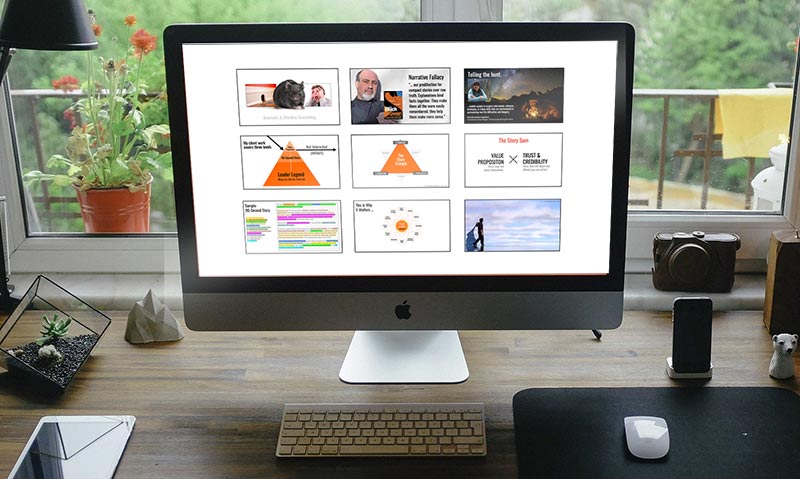Ideas that spread, win.
– Seth Godin
Despite what you may have heard, there’s NO RECIPE FOR CONTENT THAT Spreads … but we can tip the odds in our favour.
This list is compiled from my own experience (mistakes) and the insight of people smarter than me. It’s been evolving for years at this point, and I add nuances often.
Attention
- Unexpected – will this surprise our audience, seem counter-intuitive or break a pattern?
- E.g. A company called Virgin (to take an old but powerful example).
- Current – is this relevant to current trends, fashions, headlines, celebs or raging arguments? (We might also call this trend surfing or piggybacking.)
- E.g. Vegan Sausage Rolls.
- Proximal – is the message close to your target audience – physically, behaviorally, emotionally, demographically etc?
- E.g. Robberies are a fact of life, but a robbery in your street is an entirely different proposition.
- Questions – does this ask (and answer) a question that our audience cares about? Curiosity is overused, but it works when we can really deliver.
- Peer Pressured – would the lack of engagement with the message create a social problem for your target audience?
- E.g. I needed to see the finale of Game of Thrones before I could speak to certain friends.
- Opinions – do your audience have strong or polarising opinions on this?
- E.g. Playstation versus Xbox.
- Emotional – does it hook and trigger high emotion?
- E.g. Awe, Excitement, Amusement, Anger, Anxiety, Fear or Hope.
Smoothness
- Simple – is it one clear, concrete thing.
- E.g. In the UK, the Brexit movement leveraged simple, powerful statements to devasting effect. “Take back control”, “Leave means leave,” and “Get Brexit Done”.
- Tribal – is there a built-in, natural, audience(s) for this. Are there shared enemies?
- E.g. Leaving aside obvious political tribes, The Minimalists tap into a deep frustration that many of us feel regarding all the ‘stuff’ in our lives.
- Confirming – does it back up something that the audience already believes or wants to be true.
- Say it Better – does it slipstream and better articulate the story/emotions they are already telling, feeling or thinking.
- E.g. Plot Armour – the term my daughter used for dramatic characters who are unrealistically protected because of their status in the drama. E.g. When Kirk and Spock beam down to an alien world, they have plot armour. (Of course the random ensign extras have none.) This gives a simple name to something we all understand but rarely articulate.
- Credible – does it look credible and come from a strong source?
- E.g. Like when … to take a random example … Seth Godin compliments your work.
- Stories – is it wrapped in a narrative? (Hero/Villain/Tension?).
- E.g. Papa and Nicole from the 1980s Renault Clio advertising series. Yes, I’m showing my age, but I was in love with Nicole for a while there.
- Rhyming and timing – does the idea or catch phrase rhyme?
- E.g. Apple’s 2022 iPad Air – “Light. Bright. Full of Might”.
Action
- Tension – does it create a clear gap between where the audience is and where we want them to be? And if so, is it a gap they care about?
- Does this tension impact identity – does action, or the lack of it, impact on the core of who your audience thinks they are … or want to be?
- Triggers – will the viewer’s life regularly remind them of the message?
-
- E.g. Coffee and a Kitkat campaign (See Contagious by Jonah Berger.)
-
- Plan – is the ‘next step’ clear? (Are we actually asking them to do something?)
- E.g. Share/vote/life/subscribe/buy … you know what I mean.
- Easy – is the thing we want them to do easy? Beware the curse of knowledge. Is it clear from a newbie’s perspective.
- E.g. The clear red button.
Sharing
- Extreme – does it go to the edge in some sense?
- E.g. This footage of an avalanche in Kyrgyzstan (which morphs from vaguely interesting to personally compelling).
- Social currency – does it make people look smart/build their personal brand?
- E.g. Luxury goods that allow us to show we are special. (Back in the day buying an Apple Mac was a sign that you were ‘creative’.)
- Funny – will it make their social network laugh?
- Microsoft’s packaging video (they spoofed themselves and made a clear business point)
- Useful – is it useful for them AND their network?
- E.g. Hotmail is the old but classic example of this … plus the link for free email was in every hotmail email that was sent.
- Public – does its use happen in the open?
- E.g. Apple’s White Earbuds suddenly everywhere.
Where next?
Check out The Business Storytelling Glossary (BSG) or dive into the Story.Business series.

Writing services for smart, successful people looking to build their reputation and influence.

Insight, tools and techniques for those who prefer to do the work themselves.

The first draft of whatever I’m thinking – story, strategy or whatever. No guests. No polish. No apologies.

